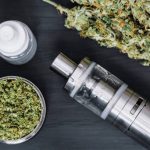For decades, tobacco smoking has been a widespread habit, deeply ingrained in cultures around the world. However, as the harmful effects of smoking have become increasingly evident, many individuals are seeking healthier alternatives to replace traditional tobacco products. From nicotine replacement therapies to innovative smokeless options, the market for tobacco replacements has expanded significantly. In this article, we will explore the various alternatives to tobacco, their benefits and drawbacks, and how they are helping people transition away from smoking.
The Need for Tobacco Replacement
Tobacco smoking is one of the leading causes of preventable deaths worldwide. According to the World Health Organization (WHO), smoking is responsible for more than 8 million deaths annually, with millions more suffering from smoking-related illnesses such as lung cancer, heart disease, and chronic obstructive pulmonary disease (COPD). The addictive nature of nicotine, a key component of tobacco, makes quitting smoking a significant challenge for many individuals.
As awareness of the dangers of smoking has grown, so too has the demand for safer alternatives. Tobacco replacement products aim to provide smokers with a way to satisfy their nicotine cravings without the harmful effects of tobacco smoke. These alternatives range from pharmaceutical options like nicotine gum and patches to newer innovations such as e-cigarettes and CBD-infused products.
Popular Tobacco Replacement Options
1. Nicotine Replacement Therapy (NRT)
Nicotine replacement therapy (NRT) is one of the most well-established methods for quitting smoking. NRT products deliver controlled amounts of nicotine to the body without the harmful chemicals found in tobacco smoke. Common forms of NRT include:
- Nicotine Gum: Chewing nicotine gum releases nicotine into the bloodstream through the lining of the mouth. It helps reduce withdrawal symptoms and cravings.
- Nicotine Patches: These patches are applied to the skin and release a steady dose of nicotine throughout the day. They are convenient and discreet.
- Nicotine Lozenges: Similar to gum, lozenges dissolve in the mouth and provide a controlled dose of nicotine.
- Nicotine Inhalers and Nasal Sprays: These products deliver nicotine through the respiratory system, mimicking the hand-to-mouth action of smoking.
NRT is widely available over the counter and is often recommended by healthcare professionals as a first step in quitting smoking. While NRT can be effective, it is not a long-term solution, as the goal is to gradually wean the body off nicotine entirely.
2. E-Cigarettes and Vaping
E-cigarettes, also known as vapes, have gained popularity as a tobacco replacement in recent years. These devices heat a liquid (often containing nicotine, flavorings, and other chemicals) to create an aerosol that is inhaled. E-cigarettes are often marketed as a safer alternative to traditional cigarettes because they do not produce tar or many of the harmful chemicals found in tobacco smoke.
However, the safety of e-cigarettes remains a topic of debate. While they may be less harmful than traditional cigarettes, they are not risk-free. Some studies have raised concerns about the potential long-term effects of vaping, including lung damage and addiction to nicotine. Additionally, the use of e-cigarettes among young people has sparked public health concerns, leading to increased regulation in many countries.
3. Heat-Not-Burn Tobacco Products
Heat-not-burn (HNB) tobacco products are another alternative to traditional smoking. These devices heat tobacco at a lower temperature than combustion, producing a vapor rather than smoke. Proponents argue that HNB products are less harmful than traditional cigarettes because they generate fewer toxic chemicals. However, like e-cigarettes, the long-term health effects of HNB products are not yet fully understood.
4. Herbal Cigarettes
Herbal cigarettes are tobacco-free products made from a blend of herbs, such as mint, clover, and lemongrass. They are often marketed as a natural alternative to traditional cigarettes and are sometimes used as a tool to help people quit smoking. While herbal cigarettes do not contain nicotine or tobacco, they still produce smoke when burned, which can be harmful to the lungs. As a result, they are not considered a completely safe alternative.
5. CBD-Infused Products
Cannabidiol (CBD), a non-psychoactive compound derived from the cannabis plant, has gained popularity for its potential therapeutic benefits, including reducing anxiety and promoting relaxation. CBD-infused products, such as CBD cigarettes and vaping liquids, are emerging as a tobacco replacement option. These products provide a smoking-like experience without the harmful effects of tobacco or nicotine. However, more research is needed to fully understand the safety and efficacy of CBD as a tobacco replacement.
6. Smokeless Tobacco Alternatives
For those who enjoy the ritual of smoking but want to avoid inhaling smoke, smokeless tobacco alternatives are an option. These include:
- Nicotine Pouches: Small pouches containing nicotine and flavorings are placed between the gum and cheek, releasing nicotine without the need for smoking or vaping.
- Snus: A type of moist snuff that is popular in Scandinavia, snus is placed under the upper lip and delivers nicotine without producing smoke.
- Chewing Tobacco: While not a healthy option, chewing tobacco is a smokeless alternative that some people use as a replacement for smoking.
While smokeless alternatives eliminate the risks associated with inhaling smoke, they are not without their own health concerns. For example, smokeless tobacco products have been linked to oral cancers and other health issues.
Benefits of Tobacco Replacement
The primary benefit of tobacco replacement products is their potential to reduce the harm associated with traditional smoking. By eliminating or reducing exposure to the toxic chemicals found in tobacco smoke, these alternatives can help improve overall health and reduce the risk of smoking-related diseases. Additionally, many tobacco replacement products are designed to help individuals gradually reduce their nicotine dependence, making it easier to quit smoking altogether.
Tobacco replacement products also offer a way for smokers to maintain the ritual of smoking without the harmful effects of tobacco. For many, the act of smoking is deeply ingrained in their daily routine, and having an alternative that mimics this experience can make the transition away from tobacco easier.
Challenges and Considerations
While tobacco replacement products offer many benefits, they are not without challenges. One of the main concerns is the potential for addiction to nicotine, particularly with products like e-cigarettes and nicotine pouches. Additionally, the long-term health effects of many tobacco replacement options are not yet fully understood, and some products may carry their own risks.
Another consideration is the cost of tobacco replacement products. While some options, like NRT, may be covered by insurance, others, such as e-cigarettes and CBD-infused products, can be expensive. This may make it difficult for some individuals to access these alternatives.
Finally, it’s important to recognize that tobacco replacement products are not a one-size-fits-all solution. What works for one person may not work for another, and finding the right alternative may require some trial and error.
Conclusion
Tobacco replacement products offer a promising way for individuals to reduce their reliance on traditional cigarettes and improve their health. From nicotine replacement therapies to innovative smokeless options, there are a variety of alternatives available to suit different needs and preferences. However, it’s important to approach these products with caution, as they are not without risks. Consulting with a healthcare professional can help individuals make informed decisions about which tobacco replacement option is best for them. As research continues and new products emerge, the future of tobacco replacement looks bright, offering hope for a smoke-free world.
Medical Disclaimer:
The information provided in these blog posts is intended for general informational and educational purposes only. It is not a substitute for professional medical advice, diagnosis, or treatment. Always seek the advice of your physician or other qualified healthcare provider with any questions you may have regarding a medical condition. The use of any information provided in these blog posts is solely at your own risk. The authors and the website do not recommend or endorse any specific products, treatments, or procedures mentioned. Reliance on any information in these blog posts is solely at your own discretion.















